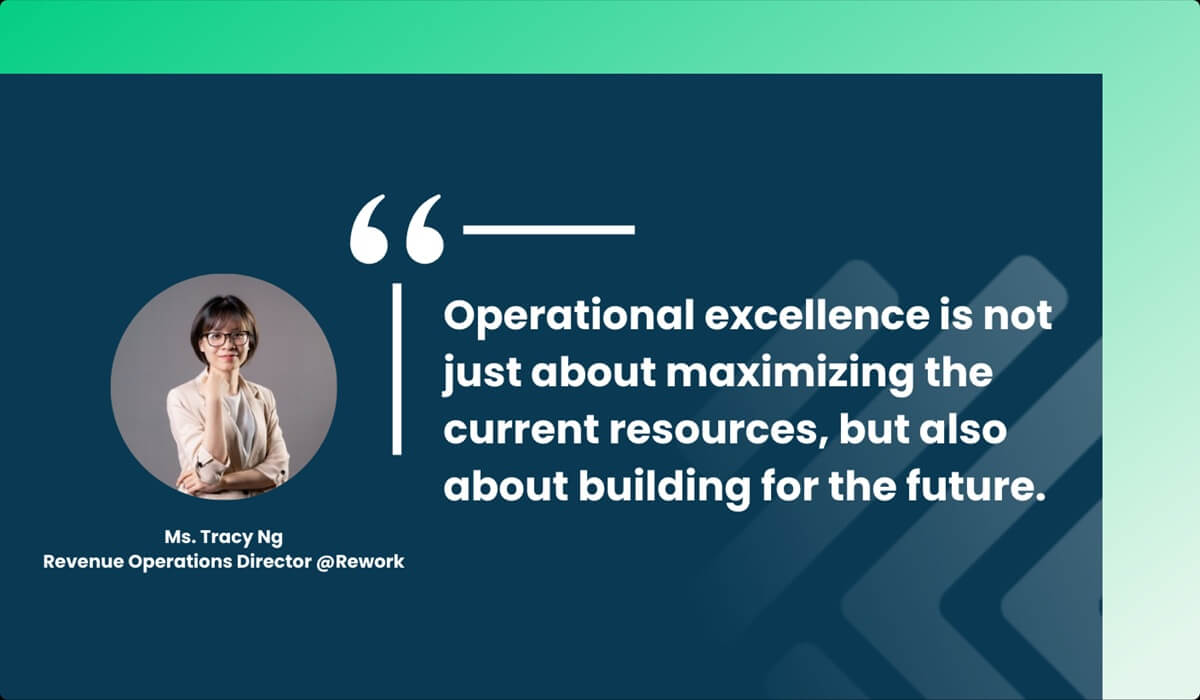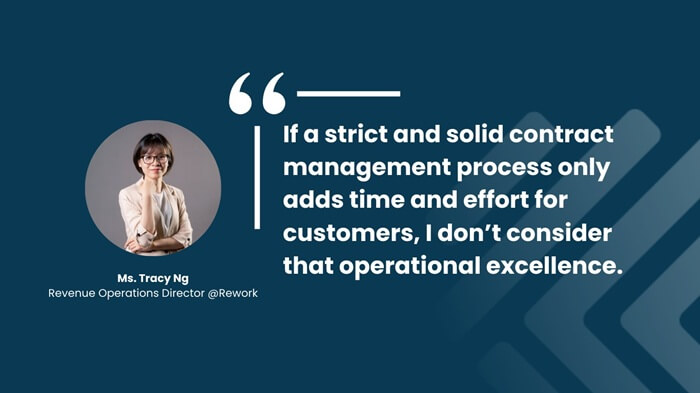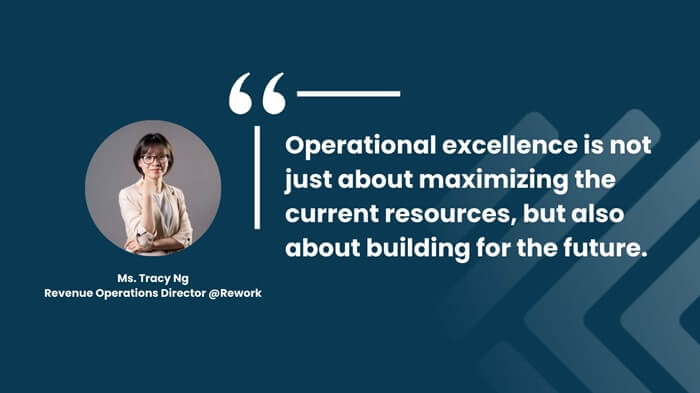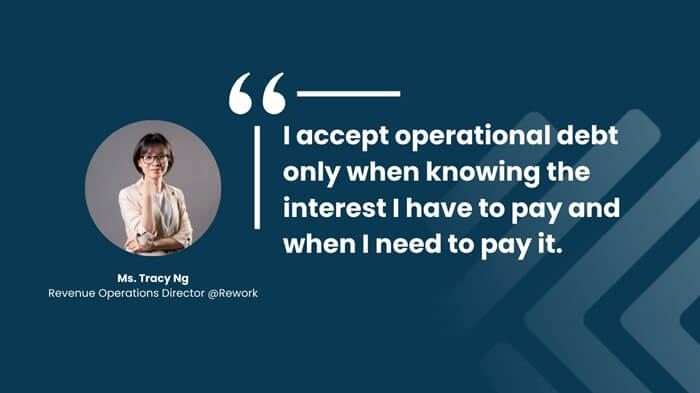What is Operational Excellence - A reflection by an Operations expert

Operational Excellence. Operation. Excellence. Two words that we know, but don’t truly understand. Everybody talks about it, but few can really define it.
Anyway, why bother?
Operational excellence only seems relevant when an operation problem hits, by which time it's often too late.
Operational debts have piled up, and their "interest" is through the roof. At that point, companies need real solutions, not impractical theories.
Yet that jumping-to-solution approach bears the risk of settling for a quick fix, rather than addressing the root cause. That’s simply not effective operational excellence.
That’s why I’m set on finding an answer, my answer, to the essence of Operational Excellence (OE).
But I’m quickly disappointed. After reading countless whitepapers and SEO-driven articles, I can only say three things about OE:
- As the name suggests, OE is to enhance organizational performance.
- It’s a mindset rather than a rigid framework. It’s something to aim for rather than a checklist we can act upon.
- To achieve operational excellence, we should practice continuous improvements.
Unsatisfied with the hollow bullet points, I decided to take another approach: observing what experts actually do. If an operation manager’s job is to achieve OE, then their actions must offer insights into what OE truly entails.
And I needed to look no further than the one next to me: Ms. Tracy Nguyen - our Revenue Operations Director.
Tracy joined her last company in 2019, during which time they successfully found product-market fit. The team faced a significant opportunity to scale, but seizing the chance required standardizing their system instead of depending on the efforts of come-and-go superstars.
Tracy played a key role in expanding the revenue team from 30 to 150 within a year, and then to over 300 the year after. All while maintaining their execution quality.
Now, she oversees all of the revenue funnel operations at Rework.
Much of her work involves designing a healthy, operation-excellent machine: process design, compensation design, data system design, and so on.
Thanks to my conversation with Ms. Tracy and reflecting back on the age-old theories, these are a few more insights about OE worth sharing.
What Operational Excellence is about: The customer-centric mindset
Operation is often viewed as a back-end function, like HR or Admin team. Ms. Tracy proves the opposite. When she began her last role, which involved standardizing the sales operations, she went through the onboarding process just like a salesperson. She attended all the sales training sessions, met the customers often, and even closed a few deals. Now, at Rework, she participates in every meeting from sales, marketing, customer service, and even product teams, not merely as an observer but as the facilitator and monitor.
Just like practicing “the gemba walk”, she watches and sees the customer journey firsthand, with clear goals and frequency, to understand the value stream, looking for wastes and opportunities, rather than sitting at the desk looking at superficial dashboards.
Rather than asking “How to operate better?”, Ms Tracy reframes it as: “How do I make it better for my customers?”. Operations should be approached from the outside in, not the inside out. A customer-centric operations system means making hard choices that favor customer interests.

In Ms. Tracy’s case, she applies customer journey mapping to her OE thinking process, examining how each activity affects customer outcomes. Operational excellence techniques should start from the value chain of the business, and aim to enhance the flow of value to customers
Without this focus, much of operational excellence is mere bureaucracy.
The real purpose of Operational Excellence: Transformative growth over incremental gains
In her previous role, Tracy was essential in the company’s scale-up journey. She led the “Sales Enablement Team,” a five-person team that enabled a 100-person salesforce to operate efficiently, manage issues, and align with other business functions.
But when she started with Rework, our company had only around 50 people, with fewer than 10 members of the growth team - way smaller than her previous company.
The question is: How is OE different between the two companies?
“Honestly, there was no need for such a Tracy back then - what’s the point of facilitating the customer journey when we barely had any customers? But to me, excellence is not just about maximizing the current resources, but also about building for the future. If you know what’s coming, you need to get things ready, so that you can strike when the iron is hot.”

An operations manager’s workload varies based on a business’s stage. But even amid urgent issues at her last company, Tracy dedicated 30-40% of her efforts to new initiatives.
“Maximizing current resources is like a cocoon getting bigger in size. But you also have to be ready for when that cocoon transforms into a butterfly.”
There is no room for the classic “We’ve always done it this way and it’s been fine” - excellence is when you stay out of your comfort zone and resilient to constant changes.
Achieving Operational Excellence: Systematic problem-solving over firefighting
“An OE organization also needs to be predictable”, Ms. Tracy pointed out.
But what does predictability mean? I wondered, especially since I’ve seen her handle hundreds of spontaneous questions daily.
“A well-written software doesn’t mean it has no bugs; it means when there’s an error we know immediately how to fix it. I apply our company’s product development mindset to building our operational excellence system. I accept operational debt only when knowing the interest I have to pay and when I need to pay it.
For example, right now our salespeople are required to log notes on the CRM after each meeting. However, I know that this rule won’t be as effective when the workload increases and each salesman has to handle over 20 meetings per week. At that point, I will need other solutions to ensure our salespeople aren’t burdened with administrative tasks, yet we still get the information we need for management”.

Too many companies still operate blindfolded. They let the teams run their course while having no idea what risks they are bearing. What they consider continuous improvement is just continuous fire-fighting, where problems aren’t necessarily prioritized but are tackled based on what’s most “urgent”, a.k.a the most recent.
“As people, we may not know everything, but in operational excellence, there’s little room for ignorance.”
So, how to build a predictable system? Ms. Tracy outlined a few criteria:
Clear process documentation: All tasks, procedures, and internal know-how must be documented clearly and made accessible for any employee to understand and follow.
Transferability: Processes should not rely on the individuals executing them. Even if someone is absent, the process must continue seamlessly.
Regular audit and quality control: A documented process does not come to life without people following it. Audit and quality control ensure that tasks proceed as planned.
Embrace the “Zoom in, Zoom out” rule: Always remember that the organization system is dynamic, with processes, people, and technology interconnected. When one element changes, we need to assess its impact on related factors.
Operational Excellence culture as a leverage for Operational Excellence system
Every article on OE highlights the role of culture. Ms. Tracy made it more specific, emphasizing the need for commitment to change, in both high and low-level staff.
“It surely won’t be easy to create a change in an organization that isn’t open to it. An operations manager (OM) can only handle their job well with both top-down and bottom-up support.”
An OM without the delegated authority to implement changes is like a parent without a say in their child’s upbringing. On the other hand, if employees don’t understand what the OM is doing, why they’re doing it, or how it will improve their efficiency, the OM will end up being ignored or stuck in firefighting. It's alarming when people continually throw problems at the operations department and hope for the best.
“OE should not be just a job title - it’s a culture that everybody in the organization should embrace so that they will be more open to new improvements. More importantly, they will self-moderate their action and take responsibility for any operational debt they might create”.

From the operations manager’s side, gaining people’s trust requires demonstrating competence. Besides soft skills like problem-solving or communication, an OM should have enough specialized knowledge to talk to people in different teams in their own language. Process experts will need to rely on OM to provide a subjective view to improve their processes.
“An OM should be like an X-ray or ultrasound technician - even though they cannot directly treat patients like a specialist doctor, they can analyze the situation and provide preliminary insights.”
“Good intentions never work, you need good mechanisms”
This famous principle by Jeff Bezos, rooted in AWS’s Operational Excellence framework, emphasizes that real improvement requires backing up practices with robust mechanisms. This is what Ms. Tracy embraced in her job.
When it comes to Operational Excellence, good intentions only go so far. “Imagine a customer-centric process designed to guarantee timely responses for every inquiry. Even if team members have the best intentions to respond quickly, without an automated reminder or follow-up system, urgent issues can slip through the cracks.”
By contrast, an automated system tracks response times and notifies the team of pending actions. This mechanism doesn’t leave customer satisfaction to chance but instead makes responsiveness a predictable part of daily operations.
But we must remember that mechanisms are just what is coming AFTER the innovation initiatives. Many organizations have been chasing the allure of new technology without integrating it meaningfully with OE principles, ending up with mixed results. Technology should serve OE goals - not the other way around. When automated systems are purposefully aligned with OE, they do more than streamline tasks; they anchor quality and consistency in every operational layer.
Last thoughts
Now that you have been through Ms. Tracy’s journey, I hope that you have a clearer view of what Operational Excellence looks like. Yes, it’s still an abstract ideal, with no one-size-fits-all checklist or a fixed end goal. But with the right mindset and mechanisms in place, knowing what OE is for and what it aims at, you can now apply OE to everyday reality that empowers teams, serves customers, and positions the business for sustained success.

Camellia
Content Strategist
On this page
- What Operational Excellence is about: The customer-centric mindset
- The real purpose of Operational Excellence: Transformative growth over incremental gains
- Achieving Operational Excellence: Systematic problem-solving over firefighting
- Operational Excellence culture as a leverage for Operational Excellence system
- “Good intentions never work, you need good mechanisms”
- Last thoughts